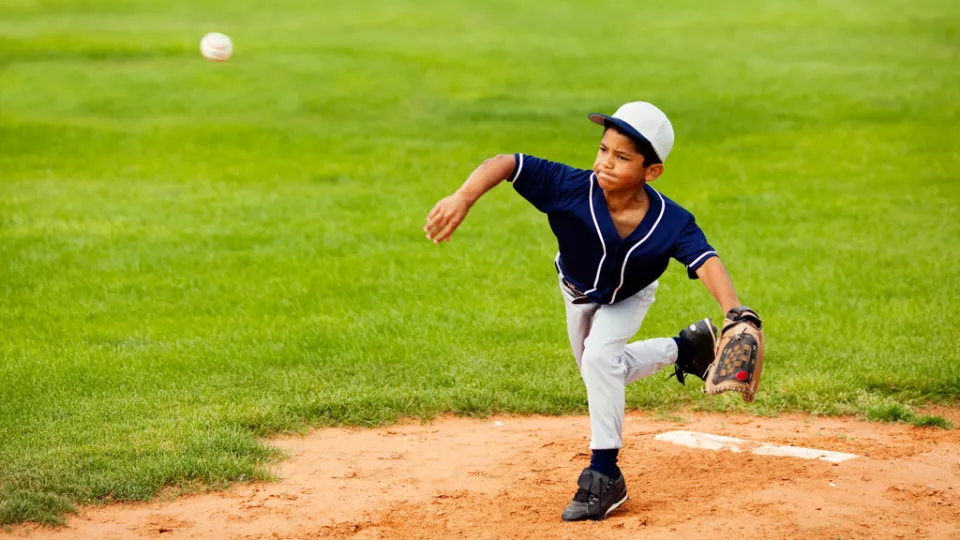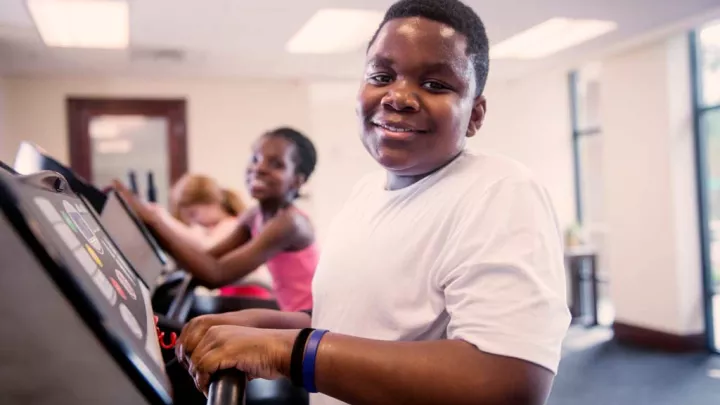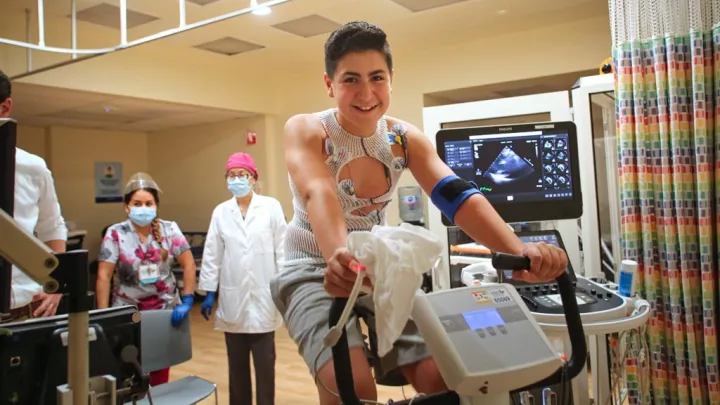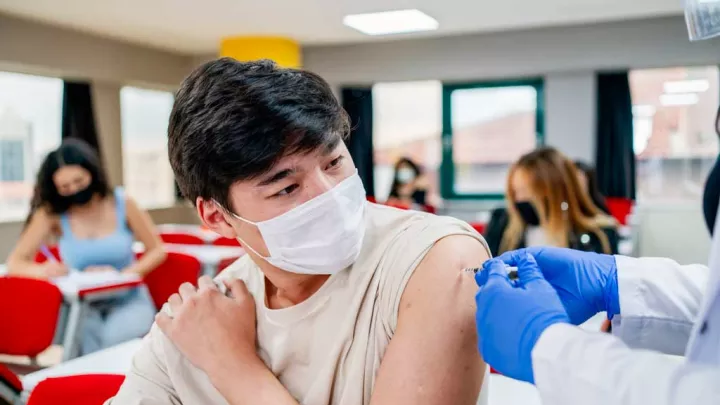
Returning to Sports After COVID-19: What Parents Should Know
Across many parts of the country, COVID-19 cases have decreased and vaccination rates have increased, making it possible for previously halted activities to resume—including youth sports. Many families are eager to get kids back on the field or the court. However, parents should exercise caution if their child has tested positive for COVID-19 within the past six months.
We spoke to Andrew Souza, DO, Attending Physician in the Heart Institute at Children’s Hospital Los Angeles, who oversees the Cardiac Exercise Stress Lab, about what parents should know before allowing their child to return to organized sports.
Most children who have had COVID-19 recover and do not experience adverse effects. In some rare cases, however, children develop serious longer-term health conditions that can include inflammation of the heart muscle and weakening of the heart or coronary arteries. The medical community is working to create guidelines that balance screening recommendations with the benefits that sports have on kids’ physical and mental well-being.
“We don’t want to unnecessarily restrict and over-test kids,” says Dr. Souza. “But we also want to be cautious. The recommendations continue to evolve as we learn more about the impact of COVID-19 on kids. Thankfully, we are not seeing a lot of heart involvement in most children.”
Before engaging in any physical activities, all children or adolescents who have had COVID-19 should visit their pediatrician for an exam, which should include an assessment of any cardiac symptoms. In addition, children should wait 10 days after a COVID-19 diagnosis and be fever free for 24 hours before returning to activity. And of course, any child displaying symptoms such as chest pain, shortness of breath, heart palpitations or unusual fatigue should see a pediatrician immediately.
The other guidelines for children getting back to sports depend primarily on two factors: a child’s age and the severity of his or her coronavirus infection.
Severe COVID-19 Cases and MIS-C
“In evaluating a child’s risk for returning to sports, one important distinction is separating kids who had multisystem inflammatory syndrome in children, known as MIS-C, and kids who just had COVID-19,” Dr. Souza advises.
A small percentage of children who have had COVID-19 also later develop MIS-C, a condition related to the coronavirus that is characterized by inflammation in the body, including of the heart and coronary arteries. Typically, children begin to display symptoms of MIS-C—which can include bloodshot eyes, red lips and tongue, stomach pain, vomiting, diarrhea, rash, severe fatigue and a high fever—several weeks after the active COVID-19 infection has passed.
Children who were diagnosed with MIS-C or who had severe COVID-19 symptoms—defined as requiring a stay in an intensive care unit and/or intubation—should stay away from exercise for three to six months and get cardiology clearance before resuming training or competitive sports, according to the American Academy of Pediatrics (AAP).
“Children who had MIS-C have typically been admitted to the hospital and treated,” says Dr. Souza. “At Children’s Hospital Los Angeles, we follow these patients closely and continue to monitor them and provide ongoing follow-up care. When they are ready, these patients come to the Cardiac Exercise Stress Lab as part of their post-MIS-C sports clearance workup.”
Patients who have had MIS-C should follow the guidance of their physician before resuming physical activity.
Kids 13 and older
For children 13 and older who had a moderate or severe case of COVID-19, experts recommend seeing a pediatrician to undergo a physical exam and a 14-point screening outlined by the American Heart Association. If a child’s screening reveals abnormalities, he or she will likely undergo an EKG and may be referred to a cardiologist for further evaluation. The AAP characterizes a moderate infection as having a fever of 100.4 degrees or higher for more than four days, a week of aching muscles or chills, or a hospital stay that was not in the intensive care unit.
Once cleared by a pediatrician, children in this age range—especially those who play high-level competitive sports—should take proper precautions before jumping back into competition. The return to sports should be gradual, and families should be on the lookout for symptoms such as shortness of breath or chest pains. If a child does experience these symptoms during activities, “they should back off, pause activity and get an evaluation,” says Dr. Souza.
“We are most concerned about kids playing sports or doing activities where they are being asked to push their limits, such as a coach saying, ‘Do another lap. Go a little faster,’” says Dr. Souza. “Kids participating in varsity high school sports, for example.”
As kids go back to school and sports, most will benefit from resuming these activities. Families, coaches and caregivers should be attentive and observe kids for signs that they are not ready to get back to a high level of activity.
There are also other rare causes of heart disease that can cause sudden death during sports participation. Regardless of screening for COVID-19 associated heart disease, there is still potential for new heart issues to arise during the athletic season.
Dr. Souza recommends that leagues and schools overseeing sports take one particular precaution: “There should be an automated external defibrillator (AED) on-site wherever competitive games are played. If it’s there and coaches or staff know how to use it, it will definitely save lives.”
Kids ages 12 and under
So far, data show that most children 12 and under do not get severely ill from COVID-19 or have adverse heart issues, especially if they had only a mild infection.
“Kids under 12 routinely get to a very high heart rate by simply going about their normal day and running around,” says Dr. Souza. “Therefore, if parents have noted that their child is playing and active as usual at home, they can be confident when their child plays sports that he or she will not have any problems.”
Parents should watch younger kids who recovered from COVID-19 for symptoms like shortness of breath or becoming easily fatigued. But beyond getting a physical at the pediatrician’s office, those kids don’t require additional screenings before getting up to bat in Little League or running onto the soccer pitch.
“The most useful thing to do for parents is to get their child a good physical exam and make sure to ask them how they are feeling and if they have any cardiac symptoms,” says Dr. Souza. “As the pandemic has gone on, the medical community has found that most kids are not having heart involvement related to COVID-19.”


